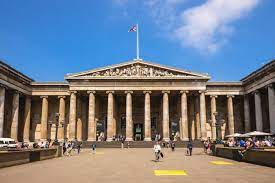British Museums to Return Looted Asante Royal Treasures to Ghana
The British Museum and the Victoria and Albert Museum have agreed to repatriate gold and silver artifacts looted from Ghana’s Asante royal court during colonial times. The long-term loan agreement follows a global push for museums and institutions to return African artifacts taken by former colonial powers such as Britain, France, Germany, and Belgium.
Among the treasures being returned are a 300-year-old Mponponso sword used in Asantehene swearing-in ceremonies, a gold peace pipe, and cast gold soul-washers’ badges. These artifacts were taken after the third Anglo-Asante War in 1874, comprising a total of 32 items—15 from the British Museum and 17 from the Victoria and Albert Museum, both located in London.
The returned artifacts will be exhibited in Kumasi, the seat of the Asantehene kingdom, at the Manhyia Palace Museum for up to six years. This repatriation aligns with significant milestones in the Ashanti kingdom, including the 150th anniversary of the 1874 war, the centenary celebration of the return of Asantehene Agyeman Prempeh I from exile, and the silver jubilee of the current king, Asantehene Osei Tutu II.
After almost 50 years of discussions between Manhyia Palace and the British Museum, the return was facilitated by two technical advisors appointed by Asantehene Osei Tutu II—Ghanaian historian Ivor Agyeman-Duah and Scottish historian Malcolm McLeod.
The move follows similar efforts in neighboring Nigeria, negotiating the return of 16th to 18th-century artifacts looted from the ancient Kingdom of Benin. In 2019, Benin republic received treasures stolen in 1892 by French colonial forces. The repatriation of these treasures to Ghana occurs amid ongoing pressure on Britain from Greece over the Parthenon Marbles, removed from the Parthenon temple in the early 19th century.




